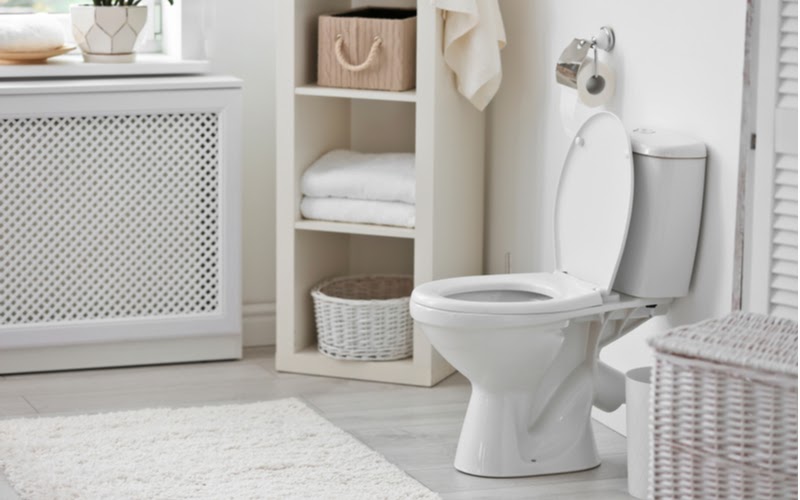4 Common Toilet Problems And How To Fix Them

It is so frustrating to watch the most important part of your bathroom start to malfunction. If the problem is toilet flushing slow, it is a source of discomfort and increase your water intake. Identifying the problem is essential so that you can apply the correct solution. Are you an amateur handyman or an experienced jack-of-all-trades? Follow our tips for fixing a leak in your toilet. Toilet Leaking Around Its Base – is a very common problem in older homes. Possible causes are loose tee bolts, tank lid leak, loose water supply line, or faulty wax ring. Contact a professional plumber to fix the issue. Before calling a plumber, these 4 tips will help you fix your toilet yourself.
The toilet does not empty
You pull the handle and the bowl fills with water, but does not empty. First of all, resist the urge to flush again unless you like sewage overflows. You need to unclog the toilet:
- Back and forth abruptly with a suction cup plunger;
- If this maneuver does not work, the next step is to empty the overflow using a drain trap. This inexpensive tool is designed to push a cable through the siphon in the bowl;
- If that doesn’t work, the plug is probably located closer to the sewers. You will need to remove the toilet and use a plumber’s snake;
- If this is beyond you, you need a professional.
Low emptying
Several reasons can explain this problem:
- First, make sure the chain between the lever and the flapper (the rubber hinged disc that lifts up to release the contents of the water tank) is tight enough. If the chain seems loose, shorten it by one or two links;
- When the tank does not fill to the fill line, gently lift the float arm to fill the tank with more water;
- If there is no fill line, make sure the water level is approximately 2cm below the cylindrical overflow tube;
- If the draining is still slow, descale the filling holes located under the rim of the bowl with hydrochloric acid and a nail or a bamboo skewer;
Finally, if all these maneuvers fail, you probably need a new valve that is easy to replace.
The toilet flushes on its own
This may sound strange. Water is flowing from the reservoir to the bowl due to a faulty valve. This slow process culminates in an unsolicited flush:
- Pour a few drops of food coloring into the reservoir;
- If colored water appears in the bowl, replace the valve with a new, identical valve.
The toilet is leaking
Check if the chain is tangled and if the valve is not in place;
Inspect the calcium build-up under the valve. If it is large, remove it with a suitable lime cleanser; often, a toilet leak is caused by an overflow: water flows through the overflow pipe. In this case, the float must be lowered by adjusting the screw or by bending the float arm;
If not, try replacing the fill valve. This task is neither expensive nor difficult.
Of course, if the problem gets worse or you are concerned that it will get worse or if the solution is beyond your capabilities, do not hesitate to contact your plumber for assistance.
You need a quick fix before, If the water is draining slowly
It is moderately clogged and finally your toilet is completely clogged if the water is running out. Does not drain at all and the level rises in the bowl? Expert unblocking team for a service to your home within the hour. If the water is still flowing but abnormally, then the obstruction in your toilet is slight. It therefore forms a piston which descends into the pipe.
- Either the septic tank is blocked.
- Either there is a plug between the toilet bowl and the septic tank.
To repair the leak in your toilet you will need:
- Close the water supply and flush the toilet to empty the tank
- Twist the rod slightly to adjust the float to its normal position
- Adjust the adjustment screw in conjunction with the valve to ensure its function
- If necessary, descale the float mechanism with an anti-lime product.
After having made these adjustments, it remains for you to test the operation of the mechanism. To do this, open the water supply to fill the tank. If there is no more flow, the repair of the leak is resolved. If not, continue adjusting until you see the leak stop. If your float is damaged, you cannot repair it. It suffices to disassemble the defective part and replace it. Test the mechanism and adjust as needed.






